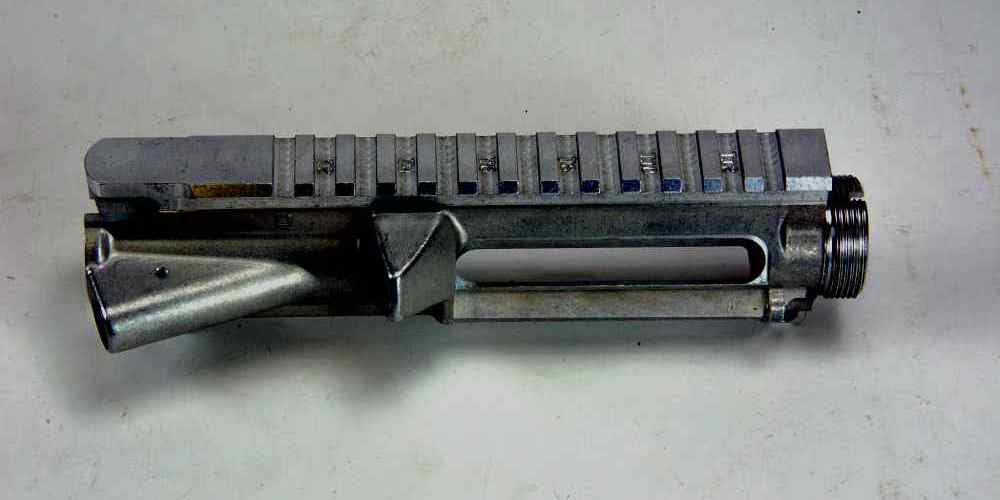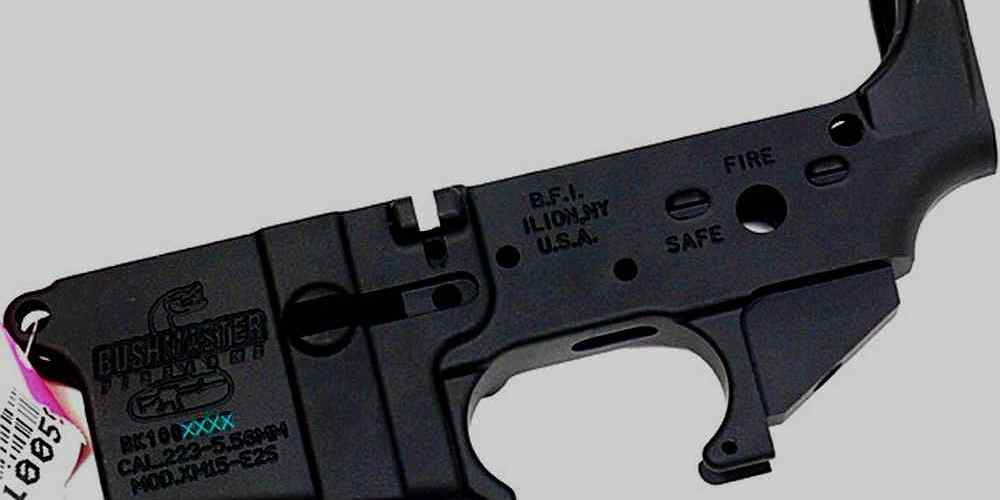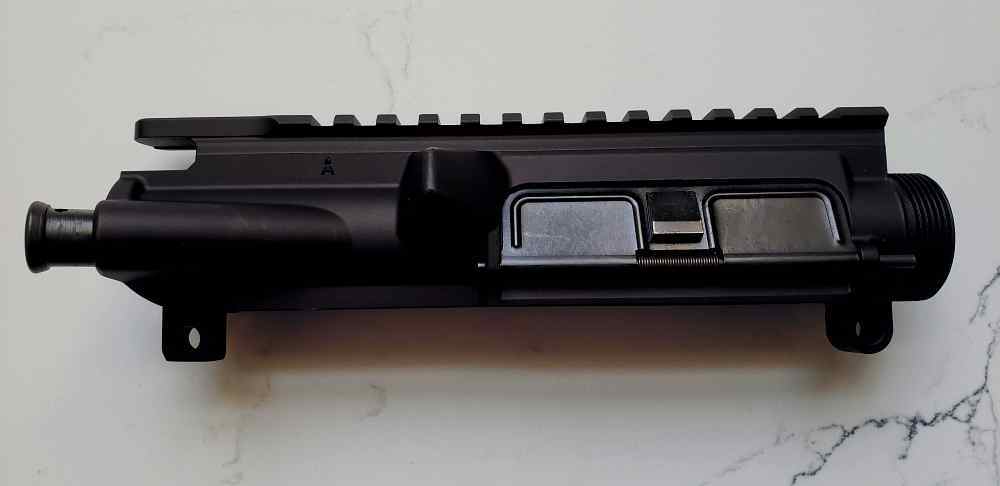“Maximize performance and control with the right muzzle device and upper receiver for your AR15.”
Benefits of Using a Muzzle Brake on Your AR15
When it comes to customizing your AR15, there are a plethora of options available to enhance its performance and functionality. One popular upgrade that many gun enthusiasts opt for is the addition of a muzzle device, such as a muzzle brake. Muzzle brakes are designed to reduce recoil and muzzle rise, resulting in improved accuracy and faster follow-up shots. In this article, we will explore the benefits of using a muzzle brake on your AR15 and discuss how to select the right upper receiver to complement your muzzle device.
One of the primary advantages of using a muzzle brake on your AR15 is the reduction in felt recoil. When you fire a round, the gases produced by the burning gunpowder push the bullet out of the barrel, creating a force that pushes the rifle back into your shoulder. A muzzle brake works by redirecting some of these gases to the sides and rear, counteracting the recoil force and helping to keep the rifle on target. This can be especially beneficial for shooters who are sensitive to recoil or who want to improve their accuracy during rapid-fire situations.
In addition to reducing recoil, a muzzle brake can also help to mitigate muzzle rise. Muzzle rise occurs when the front of the rifle lifts up after firing a shot, which can make it more difficult to stay on target for follow-up shots. By redirecting the gases produced during firing, a muzzle brake can help to keep the muzzle down and minimize muzzle rise, allowing you to maintain better control of your rifle and improve your shooting performance.
Another benefit of using a muzzle brake on your AR15 is the potential for increased barrel life. The gases produced during firing can cause wear and tear on the barrel, leading to decreased accuracy and potentially shortening the lifespan of the barrel. By redirecting these gases away from the barrel, a muzzle brake can help to reduce the amount of heat and pressure that the barrel is exposed to, potentially extending its longevity and improving overall performance.
When selecting a muzzle brake for your AR15, it is important to consider the type of shooting you will be doing and your personal preferences. There are a variety of muzzle brake designs available, each with its own unique features and benefits. Some muzzle brakes are designed specifically for reducing recoil, while others focus on minimizing muzzle rise or improving overall shooting performance. It is important to research different options and choose a muzzle brake that aligns with your shooting style and goals.
In addition to selecting the right muzzle device, it is also important to choose the appropriate upper receiver for your AR15. The upper receiver is the part of the rifle that houses the bolt carrier group and barrel, and it plays a crucial role in the overall performance of the rifle. When selecting an upper receiver, it is important to consider factors such as material, weight, and compatibility with your chosen muzzle device.
In conclusion, using a muzzle brake on your AR15 can provide a number of benefits, including reduced recoil, minimized muzzle rise, and potentially increased barrel life. By selecting the right muzzle device and upper receiver for your rifle, you can enhance its performance and improve your shooting experience. Whether you are a competitive shooter or a recreational enthusiast, adding a muzzle brake to your AR15 can help you take your shooting to the next level.
Top Muzzle Devices for Recoil Reduction
When it comes to customizing your AR15, there are a plethora of options available to help enhance its performance. Two key components that can greatly impact the overall shooting experience are muzzle devices and upper receivers. In this article, we will focus on the top muzzle devices for recoil reduction and how to select the right upper receiver for your AR15.

Muzzle devices play a crucial role in reducing recoil and muzzle rise, ultimately improving accuracy and control during rapid fire. There are several types of muzzle devices available, including muzzle brakes, compensators, and flash hiders. Each type serves a specific purpose, so it’s important to understand the differences before making a decision.
Muzzle brakes are designed to redirect gases to reduce recoil and muzzle rise. They are highly effective at mitigating felt recoil, making them a popular choice for competitive shooters and tactical applications. Compensators, on the other hand, are designed to reduce muzzle rise by redirecting gases upward. While they may not be as effective at reducing recoil as muzzle brakes, compensators are great for improving follow-up shot accuracy.
Flash hiders are designed to reduce the visible signature of muzzle flash, making them ideal for low-light shooting conditions. While they may not have as much of an impact on recoil reduction as muzzle brakes or compensators, flash hiders are still a valuable addition to any AR15 setup.
Some of the top muzzle devices for recoil reduction include the SureFire ProComp 556, the VG6 Precision Gamma 556, and the Strike Industries JCOMP Gen2. These muzzle devices are known for their effectiveness in reducing recoil and muzzle rise, making them popular choices among shooters looking to improve their shooting performance.
When selecting an upper receiver for your AR15, it’s important to consider factors such as material, weight, and compatibility with your chosen muzzle device. Upper receivers are available in a variety of materials, including aluminum, steel, and polymer. Aluminum upper receivers are lightweight and durable, making them a popular choice among shooters. Steel upper receivers are heavier but offer increased durability and strength. Polymer upper receivers are lightweight and affordable, but may not be as durable as aluminum or steel.
In addition to material, weight is another important factor to consider when selecting an upper receiver. A lighter upper receiver can help reduce overall weight and improve handling, while a heavier upper receiver may provide increased stability and reduce felt recoil.
When selecting an upper receiver, it’s also important to ensure compatibility with your chosen muzzle device. Some muzzle devices may require a specific barrel length or gas system configuration, so be sure to check compatibility before making a purchase.
In conclusion, muzzle devices and upper receivers play a crucial role in enhancing the performance of your AR15. By selecting the right muzzle device for recoil reduction and choosing a compatible upper receiver, you can greatly improve your shooting experience. Whether you’re a competitive shooter or a tactical operator, investing in quality muzzle devices and upper receivers can make a significant difference in your overall shooting performance.
How to Choose the Right Muzzle Device for Your AR15
When it comes to customizing your AR15, there are a plethora of options to choose from. One of the key components that can greatly impact the performance of your rifle is the muzzle device. Muzzle devices are attachments that are mounted on the end of the barrel to help control recoil, reduce muzzle rise, and direct gases away from the shooter. With so many options available, it can be overwhelming to choose the right one for your specific needs.
One of the most popular types of muzzle devices for the AR15 is the flash hider. Flash hiders are designed to reduce the visible signature of the muzzle flash when shooting in low light conditions. They work by dispersing the burning gases that exit the barrel, which helps to minimize the bright flash that can give away your position. Flash hiders are a great option for those who shoot in low light situations or for tactical applications where stealth is important.
Another popular type of muzzle device is the compensator. Compensators are designed to reduce recoil and muzzle rise by redirecting gases to counteract the upward force of the rifle. This can help improve accuracy and control during rapid fire or follow-up shots. Compensators are a great option for competitive shooters or those who want to improve their shooting performance.
If you are looking for a muzzle device that offers a combination of flash suppression and recoil reduction, a muzzle brake might be the right choice for you. Muzzle brakes are designed to redirect gases to the sides and rear of the rifle, which helps to reduce recoil and muzzle rise. This can make shooting more comfortable and help you stay on target during rapid fire. Muzzle brakes are a great option for those who want to minimize recoil without sacrificing flash suppression.
When choosing a muzzle device for your AR15, it is important to consider the thread pitch of your barrel. Most AR15 barrels have a standard thread pitch of 1/2×28, but some manufacturers may use a different thread pitch. Make sure to check the specifications of your barrel before purchasing a muzzle device to ensure a proper fit.
In addition to selecting the right muzzle device, choosing the right upper receiver for your AR15 is also important. The upper receiver is the part of the rifle that houses the bolt carrier group and barrel. There are two main types of upper receivers for the AR15: the forged upper receiver and the billet upper receiver.
Forged upper receivers are made by hammering a piece of aluminum into shape using a die. This process creates a strong and durable upper receiver that is capable of withstanding the rigors of shooting. Forged upper receivers are a great option for those who want a reliable and affordable option for their AR15.
Billet upper receivers are machined from a solid block of aluminum, which allows for more intricate designs and customization options. Billet upper receivers are often lighter and more aesthetically pleasing than forged upper receivers, but they can be more expensive. Billet upper receivers are a great option for those who want a unique and customized look for their AR15.
In conclusion, choosing the right muzzle device and upper receiver for your AR15 can greatly impact the performance and aesthetics of your rifle. Whether you are looking to reduce recoil, improve accuracy, or customize the look of your rifle, there are plenty of options available to suit your needs. Take the time to research and test different muzzle devices and upper receivers to find the perfect combination for your AR15.
Upper Receiver Options for Your AR15 Build
When it comes to building your own AR15, there are a plethora of options to consider. One of the key components to think about is the upper receiver. The upper receiver is the part of the rifle that houses the bolt carrier group, barrel, and handguard. It plays a crucial role in the overall performance and functionality of your AR15.
There are two main types of upper receivers to choose from: the forged upper receiver and the billet upper receiver. Forged upper receivers are made by hammering a piece of aluminum into shape, resulting in a strong and durable product. Billet upper receivers, on the other hand, are machined from a solid block of aluminum, allowing for more intricate designs and customization options.
When selecting an upper receiver for your AR15 build, it’s important to consider the type of muzzle device you plan to use. Muzzle devices are attachments that are mounted on the end of the barrel to control recoil, reduce muzzle rise, and redirect gases. There are several different types of muzzle devices to choose from, including flash hiders, compensators, and muzzle brakes.
Flash hiders are designed to reduce the visible signature of the muzzle flash when firing your rifle. They work by dispersing the gases that are expelled from the barrel, making it harder for your enemies to spot your position. Compensators, on the other hand, are designed to reduce muzzle rise and recoil by redirecting gases to counteract the upward movement of the barrel. Muzzle brakes are similar to compensators but are more effective at reducing recoil by redirecting gases to the sides and rear of the rifle.
When selecting a muzzle device for your AR15 build, it’s important to choose one that is compatible with your upper receiver. Some muzzle devices require a specific type of barrel or gas system to function properly. For example, some compensators are designed to work with a specific barrel length or gas system, so it’s important to do your research before making a purchase.
In addition to compatibility, it’s also important to consider the material and finish of the muzzle device. Muzzle devices are typically made from steel or aluminum and come in a variety of finishes, including black oxide, nitride, and stainless steel. The material and finish of the muzzle device can affect its durability, corrosion resistance, and overall appearance.
Overall, selecting the right upper receiver and muzzle device for your AR15 build is crucial to achieving optimal performance and functionality. By considering factors such as compatibility, material, and finish, you can ensure that your rifle is reliable, accurate, and aesthetically pleasing. So, take your time to research and choose the best components for your AR15 build, and enjoy the process of creating a custom rifle that suits your needs and preferences.
Comparing Different Upper Receiver Materials for AR15s
When it comes to building or customizing your AR15, there are a plethora of options to consider. One of the key components to think about is the upper receiver, which plays a crucial role in the overall performance and functionality of your rifle. In this article, we will delve into the different materials used in upper receivers for AR15s and discuss their pros and cons.
Aluminum is the most common material used in upper receivers for AR15s. It is lightweight, durable, and offers excellent corrosion resistance. Aluminum upper receivers are also relatively affordable, making them a popular choice among gun enthusiasts. However, aluminum can be prone to scratching and wear over time, so it may not be the best option for those who are rough on their firearms.
Another material commonly used in upper receivers is steel. Steel is incredibly strong and can withstand a lot of abuse, making it a great choice for those who put their rifles through rigorous use. However, steel is heavier than aluminum, which can affect the overall weight and balance of your AR15. Additionally, steel is more prone to rust and corrosion, so proper maintenance is essential to keep your rifle in top condition.
For those looking for a balance between weight and durability, polymer upper receivers are worth considering. Polymer is lightweight and resistant to corrosion, making it a great option for those who want a low-maintenance rifle. However, polymer may not be as strong as aluminum or steel, so it may not be the best choice for heavy-duty use.
When choosing an upper receiver material for your AR15, it is essential to consider your intended use for the rifle. If you are a casual shooter who values lightweight and affordable options, aluminum may be the best choice for you. If you are a serious shooter who puts their rifle through tough conditions, steel may be the way to go. And if you want a low-maintenance rifle that is still durable, polymer may be the best option for you.
Ultimately, the choice of upper receiver material comes down to personal preference and intended use. Each material has its own set of pros and cons, so it is essential to weigh them carefully before making a decision. Whichever material you choose, make sure to properly maintain your rifle to ensure its longevity and performance.
In conclusion, the material of the upper receiver plays a significant role in the overall performance and functionality of your AR15. Whether you choose aluminum, steel, or polymer, each material has its own set of advantages and disadvantages. Consider your intended use for the rifle and your personal preferences when selecting an upper receiver material. With proper maintenance and care, your AR15 will serve you well for years to come.






